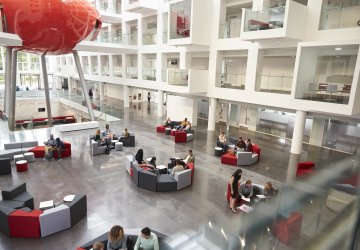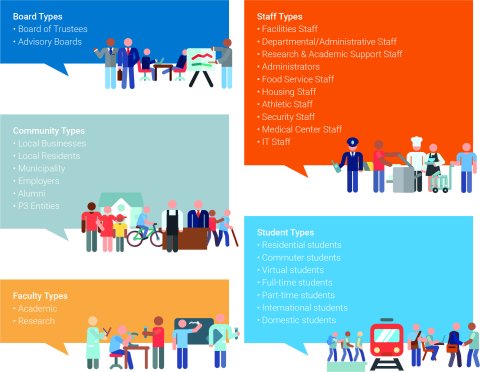The most important stakeholders in the campus of the future will be the students of the future. To understand who these people will be, we must know two things: who are the students of today, and what — if any — are the changes occurring in their demographics?
Research shows that the pathway from school to university for a student of today is more complicated than it was a generation ago. The stereotypical view of a new university student – young, fresh out of college, and focused on obtaining a degree or similar – is no longer the only reality of students today. Students of today are more diverse, with increases in the populations of LGBTQ+, older adults, ethnic groups, and first-generation students, to name a few. How can the university campus enhance the experiences of these growing populations?
Economic and Technology Shifts
Students of today are also dealing with major implications around the hike in tuition rates, and the associated debt that comes from student loans. They are more likely to expect a tangible return on investment and proof that their investment will set them up for success. Providing a reputable education is the primary mission of universities, and many are exploring new educational models, new areas of study, new ways of learning, and new tools to continue to provide quality education.
There are also changing expectations around connectivity, innovation, and access to new technologies that contribute greatly to the experiences students have on campus. Evolving technologies, such as 5G, IoT initiatives, BIM, Analytics, Augmented Reality, Robotics, and more are examples of technologies that are changing how students – as well as faculty, staff, and the surrounding community – can interact with the campus.
Stakeholders of a Campus of the Future
So, how does a university move towards ensuring they can continue to provide innovative and quality experiences for students? Many universities are taking a step back and evaluating who their stakeholders are and expanding their view to the surrounding communities. These emerging stakeholders can include people, companies, and governments who are engaged with students, graduates, faculty, and staff during and after their campus experiences. For example, future employers have a direct interest in the education of their prospective employees. Many universities are also looking into Public-Private Partnerships (P3) to partner with the public and private sectors for funding for new facilities and initiatives on campus that are mutually beneficial.
Here are some major stakeholders and growing constituencies around the Campus of the Future:
One thing is certain. Students expect the universities they attend to provide them with networking opportunities and pathways to collaboration with other students, universities, local communities, and employers. There are numerous opportunities for universities to make new connections and partnerships that enhance the experiences and educations they provide.
If you would like to read more about the campus of the future, you can access an extensive report around this topic that was recently conducted by Planon with a group of distinguished higher education professionals.


